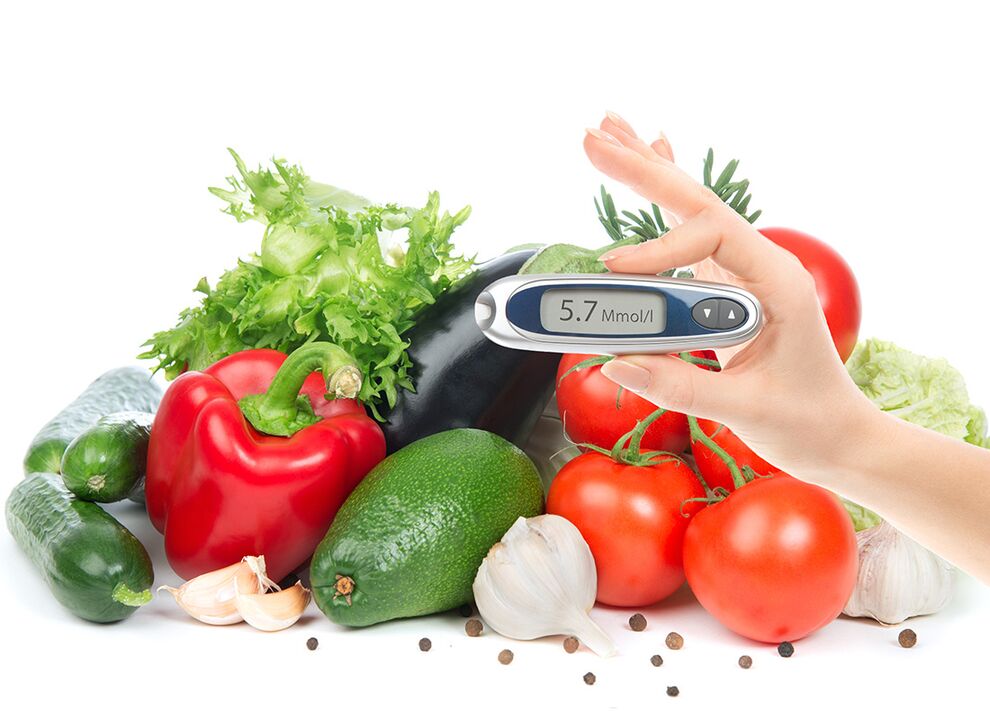
Diabetes is a disease that plagues people for a lifetime. Its appearance is due to the complete or partial lack of pancreatic hormone-insulin. Insulin is a transport protein that transports glucose to our body cells, provides nutrients to the blood and fills the cells with energy.
Many people underestimate the importance of sticking to a diabetic diet. The essence of this disease is that improper diet leads to metabolic disorders. It is scientifically proven that it is foolish to deny that a diabetic diet is a correct way to fight disease.
Hyperglycemia is the main stage of the development of diabetes. In order to avoid hyperglycemia, dieting is worthwhile. The basis of a diabetic diet is to increase protein intake, reduce carbohydrates in the daily diet, and fats that are easily converted into carbohydrate components and their components, which complicates and aggravates the disease. Facts have proved that by following simple and clear nutrition rules, you can restore your metabolism and blood sugar levels to normal.
How do people with diabetes eat
For diabetics, the question is always very important-what kind of diet therapy is needed for diabetes and how effective it is. The main food should be dairy products, vegetables and fruits. You need to eat enough meat. It is important to prevent the breakdown of proteins in the body and monitor the maintenance of glycogen, which is the natural production of the energy components of our body. This directly depends on the daily intake of high-protein foods, as well as the trace elements, vitamins and minerals that saturate our bodies.
The importance of eating beans for diabetes
Beans are one of the richest sources of protein and amino acids. A prominent variety is the white kidney bean. It contains a large number of non-essential and irreplaceable amino acids that cannot be synthesized in our body and must be supplemented from food sources. They are valine, tryptophan, leucine, methionine, lysine, histidine, and phenylalanine. Amino acid, threonine. This product contains vitamin C, B, PP, potassium, zinc, iron and phosphorus.
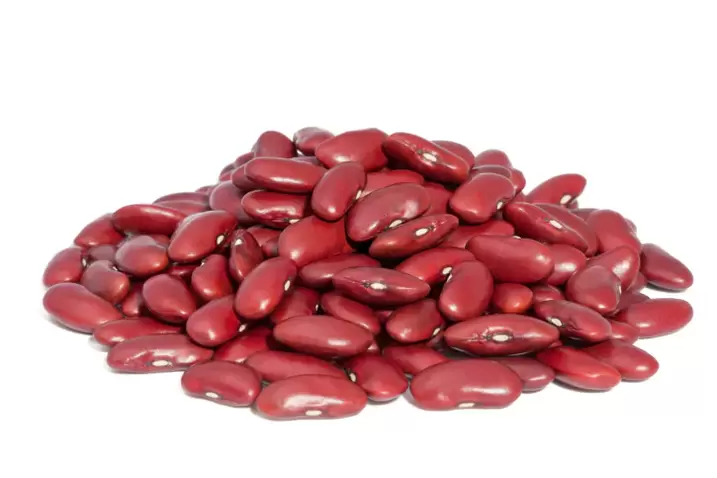
Red beans are a legal food for diabetics, rich in minerals and vitamins.
Beans help to form gas in the intestines, which limits the use of beans in large quantities to a certain extent. However, if the enzyme preparation is used with beans, this undesirable characteristic can be avoided.
Diabetic Cereals
It is worth noting that one of the important aspects of following the diet is the use of buckwheat porridge. The uniqueness of this oatmeal is that it does not have much effect on the metabolism of carbohydrates in the body, and it keeps the blood sugar level at a stable level, which does not increase impulsively than other foods.
In addition to buckwheat, your diet should also include oats, wheat porridge, barley and corn, which will be the right breakfast for diabetics. Cereals are rich in vitamins and minerals, which are necessary for the stability and normal functioning of our body, and they are also easy to digest. An important factor is that the grains listed above are an excellent source of adenosine triphosphate (ATP), which can fill muscle cells with energy.
What fruit to eat for diabetes
Fruits are the main source of vitamins, minerals and fiber necessary for the normal function of the human body. The concentration of these nutrients in this food group is several times that of any other food source. An important feature is that there is almost no glucose, and the composition is mainly fructose and sucrose.
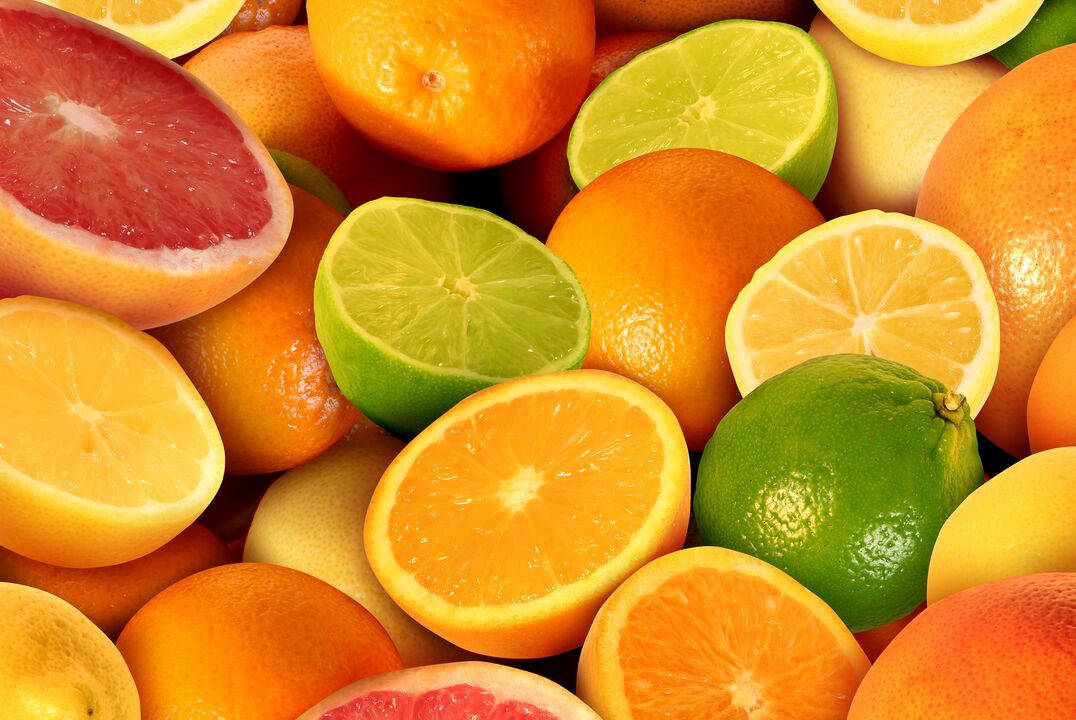
Citrus fruits are the most useful fruits for diabetics and are characterized by a low glycemic index.
Let's take a look at which fruits and berries should be included in the diabetic diet.
From the fruit:
- Grenades;
- Orange;
- Dried fruits (plums, dried apricots, dried apples);
- pear;
- tangerinr;
- Grapefruit;
- nectarine;
- lemon;
- apricot;
- Apple.
From berries:
- Any kind of gooseberry;
- gooseberry;
- blackberries;
- Cherry;
- blueberry.
Melon and watermelon should be eaten in moderation and limited in quantity, because these foods are high in carbohydrates.
Anyone with diabetes should pay more attention to fruits such as grapefruit, lemon, and orange for many reasons:
- Rich in vitamin C. The importance of vitamin C to the human body cannot be overestimated. It is scientifically proven that it is very important for strengthening the blood vessel wall and the work of the enzyme system;
- One of the best qualities of citrus fruits is their low glycemic index. This is because the carbohydrate components in these fruits have little effect on blood sugar levels;
- Possess strong antioxidant capacity, inhibit the development of diabetes complications by preventing the negative effects of high blood sugar on our body cells.

fresh fruit juice. Diabetes diet is not a reason not to indulge yourself!
A quick note on citrus juice. Try to avoid buying fruit juices or even natural fruit juices in regular stores, because they contain carbohydrates and sugars, which can cause blood sugar levels to rise. Your best option is to buy fresh fruits and make juices with products that are truly naturally grown.
What can't you eat with diabetes?
Every diabetics should know what diabetics cannot eat. If you eat all foods without exception without knowing their glycemic index in advance, this may lead to the gradual development of hyperglycemia and subsequent hyperglycemic coma.
The diabetic diet should not contain prohibited foods.
Flour and bakery products:
- White bread, especially freshly baked food;
- Any rich product;
- Pastry.
Meat products and seafood:
- Smoked products;
- Rich broth;
- Some bird meat (duck, goose);
- Fatty pork and beef;
- Fatty fish.

For diabetes, fatty and spicy meat products will have to be abandoned in order to support the consumption of meat (a limited quantity).
Fruits and dried fruits forbidden for diabetic patients:
- banana;
- Grape;
- date;
- As shown in the figure;
- Strawberry;
- raisin.
Dairy products:
- Fatty acid cream
- Whole milk;
- Kefir and yogurt with high fat content;
- Butter (especially homemade).
Vegetable dishes:
- Potato;
- pea;
- Any pickled vegetables.
Other foods:
- sugar;
- candy;
- Butter biscuits;
- Juice (store);
- Any food in a fast food restaurant.
The hazards and benefits of diabetic people eating dates, coffee and honey
It is no exaggeration to say that everyone likes these products, and it is difficult to give up these little joys of life because of diabetes. Therefore, we will separately analyze whether you can use them in your diet.
Honey
As they said, how many people there are, how many opinions. Many articles about the use of honey by diabetics have been published in magazines and various health blogs. Let us think logically, the structure of honey is high in fructose, and this carbohydrate component cannot significantly change the glucose level in human blood. However, we cannot ignore the fact that we need insulin to absorb and metabolize fructose. For example, in type 2 diabetes, it cannot fully achieve its purpose. In this case, the consumption of honey will cause the blood sugar of diabetic patients to rise, and in turn, it will not bring any harm to healthy people.
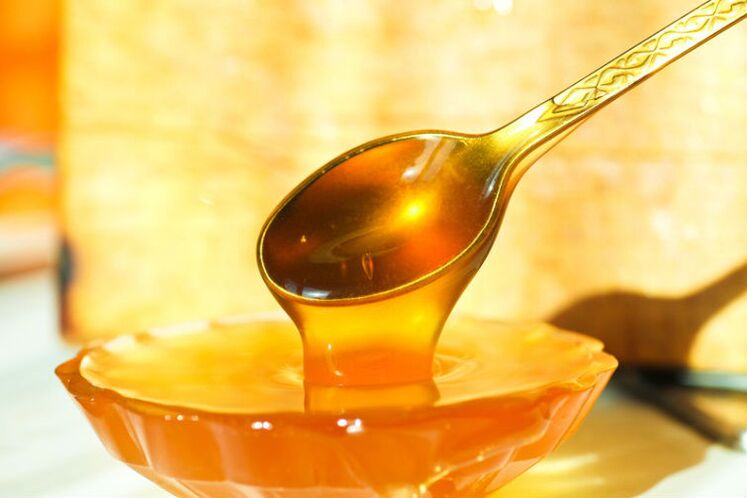
Can honey be used for diabetes? There is constant debate, but it is agreed that eating 1 scoop on an empty stomach will not hurt, but it will be useful.
Based on these facts, for diabetic patients, the following conclusions can be drawn:
- As a useful substance for the body, honey should be present in the diet.
- Do not consume more than two tablespoons a day.
- For best results, it is best to eat a spoonful of honey on an empty stomach and drink it with a glass of water. This is because honey is converted into glycogen and will be used as the start of energy production and synthesis of useful substances in the body, working throughout the day. In most cases, small amounts of this product are still included in various diet reminders for diabetes.
date
A very controversial product included in the diabetic diet. They contain a lot of calories and fast carbohydrates, however, they contain a lot of potassium and vitamin A, which is a bias for the complications of diabetes.
Based on these facts, it is recommended:
- It is strictly forbidden for diabetic patients with severe forms of this disease to use dates.
- For mild diabetes, it is corrected by adhering to diet and hypoglycemic drugs, and small amounts are allowed, provided that the daily intake does not exceed 100 grams.

It is strongly recommended that diabetics refuse coffee.
coffee
It is strongly recommended that people with severe diabetes avoid using this product, regardless of the coffee concentration. For the average form of the severity of this disease, a small amount of weak coffee is allowed.
Although coffee has little effect on carbohydrate metabolism, it activates vasomotor centers and relaxes blood vessel walls. As a result, the blood vessels of the bones, heart, and kidney muscles dilate, increasing the activity of the cerebral arteries. Therefore, the diet of diabetic patients does not include coffee.
Nuts and their beneficial properties
It is no exaggeration to say that nuts are just a "hotbed" of beneficial properties and nutrients that our body needs. They include vitamin D-3, K, Ca, fiber, and polyunsaturated fatty acids. In the fight against diabetes, nuts play an important role, directly affecting carbohydrate metabolism and lowering blood sugar levels. In addition, the use of nuts can help restore damaged cells in internal organs and prevent the development of diabetes complications. Therefore, it is essential to introduce this product into the diet of diabetic patients.
Let us consider the effects of different types of nuts on sugar reduction.
Walnut
We have known since childhood that this kind of nut is food for the brain. The diet of diabetic patients should include walnuts, which are one of the most important foods because the brain lacks energy compounds due to insufficient glucose intake.
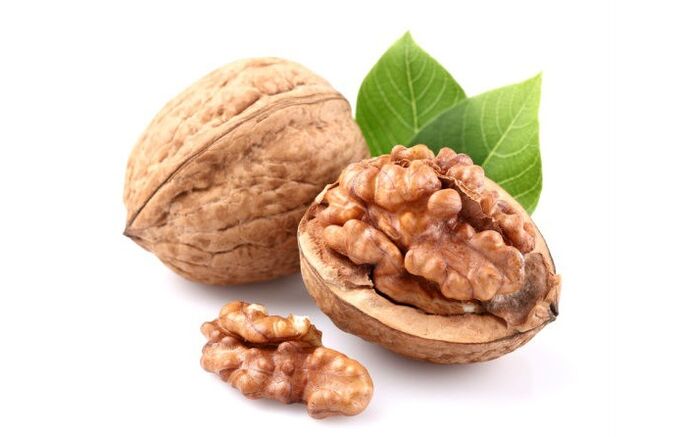
Nutrient-rich walnuts must be present in the diet of diabetic patients.
Walnuts are rich in manganese, alpha-linolenic acid and zinc. These trace elements directly affect the reduction of blood sugar levels. It is also included in the composition of essential fatty acids to inhibit the progression of visceral vascular disease and the failure of lower extremity atherosclerosis. The fact that walnuts contain almost no carbohydrates plays an important role. This is a simple answer to all questions about the role of walnuts. It can be taken as a separate dish or as a dietary supplement with diabetics.
peanut
This is a dietary product with particularly rich amino acid content. Its protein is plant-based and cannot be replaced by any animal protein. Therefore, peanuts must be included in daily breakfast, lunch or dinner. The protein found in peanuts is quickly integrated into the body's metabolism and decomposed, producing high-density glycoproteins in the liver to reduce sugar. This will "drain" cholesterol from the blood vessels and break it down.
Almond nuts
Their ingredients have the highest calcium content. Almonds are strongly recommended to treat diabetic osteoarthropathy that affects bones and joints. Eating 10-13 almonds a day will provide the body with the necessary trace elements, which will have a positive effect on the metabolism of carbohydrates. The diet of adults with diabetes should include almonds.
Pine nuts
The pine nuts are delicious first. In addition, they contain large amounts of potassium, calcium, vitamins B and D, ascorbic acid, phosphorus, and magnesium, and they are needed if the goal is to eat the right diet. Pine nuts are used to prevent microvascular disease, leg inflammation and ARVI in patients with diabetic foot syndrome.
What you need to know about the glycemic index
The glycemic index is a measure of the effect of food intake on blood sugar levels. Each product has its own glycemic index. If it is low (10-40 units), then the blood sugar level will rise slowly, if the index is high (over 70 units), then quickly. In this regard, every person with diabetes must know the glycemic index of the food he eats.
If you are unsure, we strongly advise you not to take risks, even if the disease is in its early stages. Because all high-index foods must be stopped. Products with average indices (if they are not on the banned list), you only need to restrict their use.
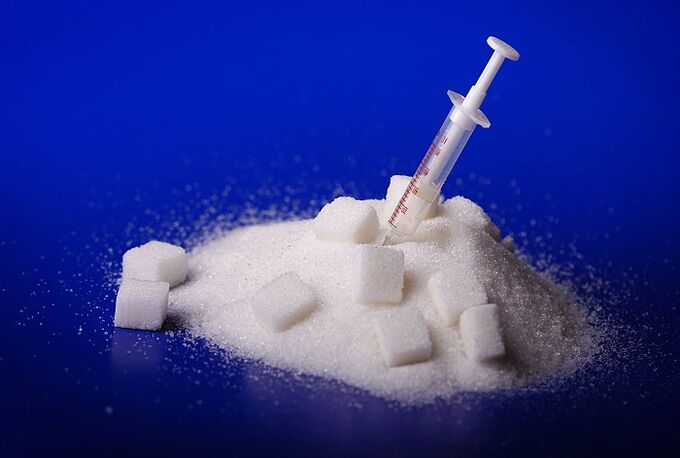
Diabetes brings a lot of discomfort to patients, but by following correct eating habits and constantly monitoring blood sugar levels, you can lead a fulfilling lifestyle.
This article provides basic advice on how to eat well in diabetes. Which diet is right for you? A qualified expert who knows the individual characteristics of your body will understand. He will formulate a diet that reduces sugar content, and following these diets will help fight underlying diseases.
Diabetics eat correctly, coordinate the glycemic index of food, and pay attention to all important aspects.
healthy!






























